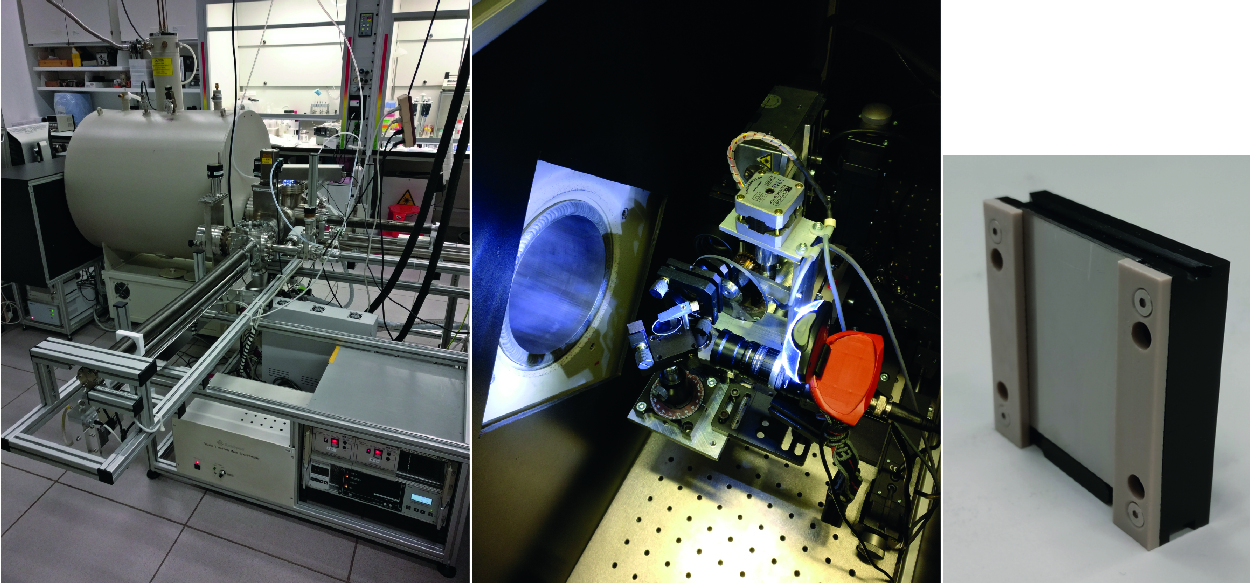Construction and initial characterization of an internal source matrix-assisted laser desorption/ionization Fourier-transform ion cyclotron resonance mass spectrometer
The number of commercially available MALDI-FTICR mass spectrometers and their instrumental flexibility is limited. To attain more experimental possibilities a MALDI-FTICR-MS was constructed to enable fundamental research of the processes governing matrix-assisted laser desorption/ionization.

Figure 1: From left to right: ultrahigh vacuum interlock system with 4.7 T superconducting magnet; Nd:YLF laser (349 nm) setup with attenuator and camera on a 2D translation stage; target plate holder fitted with a 30.0 × 40.0 × 1.00 mm target plate (grounded with spring contacts on the back).
The system is constructed on a rail system, can be completely retracted from the magnet and allows easy modifications. Additionally, it allows for facile target introduction with an automated interlock system, simple exchange of the ICR-cell for dedicated experiments, exact positioning (with a 0.635 µm step size) of the MALDI target plate at varying distances from the cell inside the magnet, as well as a free choice of laser positioning by means of a 2D translation stage onto which the optical setup is mounted, where each laser pulse triggers the movement to next desired sampling point. The laser intensity can be controlled with an attenuator. The optical setup is controlled with LabView-based software. The target holder enables the user to study various different target plate materials, since the only requirement is the proper plate dimensions of 30.0 × 40.0 × 1.00 mm.
Currently, we are increasing the system’s sensitivity by installing a new preamplifier to enable calibration over a wider m/z range. The instrument’s design features and initial characterization will be shown. The authors would like to acknowledge the help of Christian Marro and Heinz Benz with the instrument part manufacture and the LabView programming, respectively.